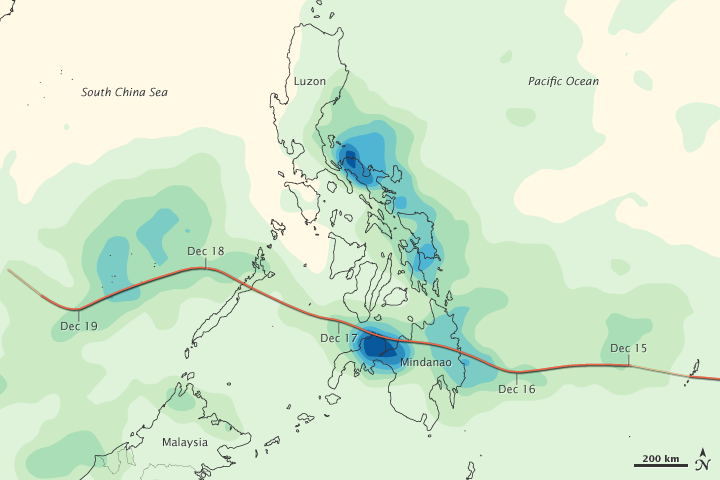


Tropical Storm Washi devastated the Philippines on December 16 and 17, 2011. The storm was not powerful in the traditional sense—it’s winds never surpassed 55 knots (100 kilometers per hour or 63 miles per hour) and it lacked the organization of an intense typhoon or hurricane. Nonetheless, Washi unleashed extremely heavy rain on northwest Mindanao,. and the resulting floods left hundreds dead or missing.
This image shows rainfall between December 15 and midday on December 19. Dark blue spots indicate areas of extreme rain, and the largest area is in northwest Mindanao. The image was made with data from the Multisatellite Precipitation Analysis, which combines measurements from many satellites and calibrates them with rainfall data from the Tropical Rainfall Measuring Mission (TRMM) satellite.
Most of the rain fell on Friday, December 16. The rain rushed down mountain slopes and converged on coastal communities overnight, while people were sleeping. The ensuing flash floods left 957 dead and 1,582 injured as of December 20, reported the National Disaster Risk Reduction and Management Council. Most of the fatalities came in Cagayan De Oro and Iligan City. Nearly 340,000 people have been affected by the disaster.
NASA Earth Observatory image by Jesse Allen, using near-real-time data provided courtesy of TRMM Science Data and Information System at Goddard Space Flight Center. Caption by Holli Riebeek.